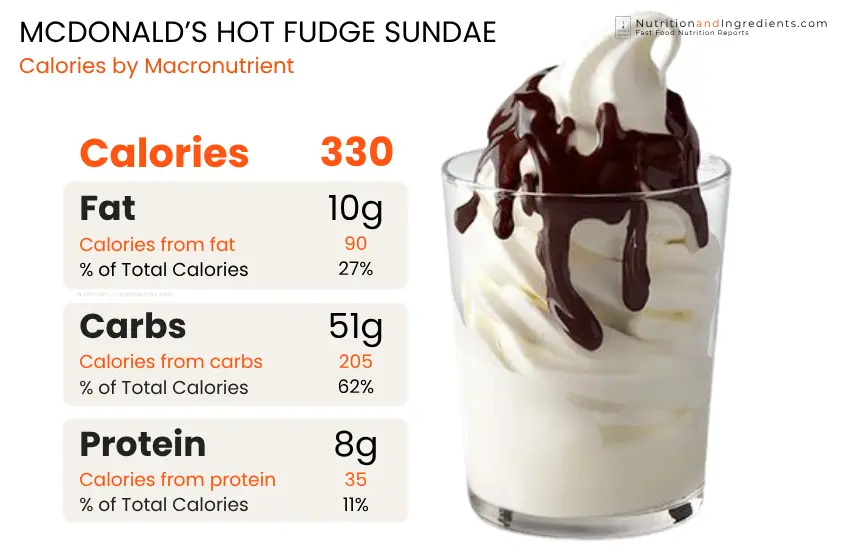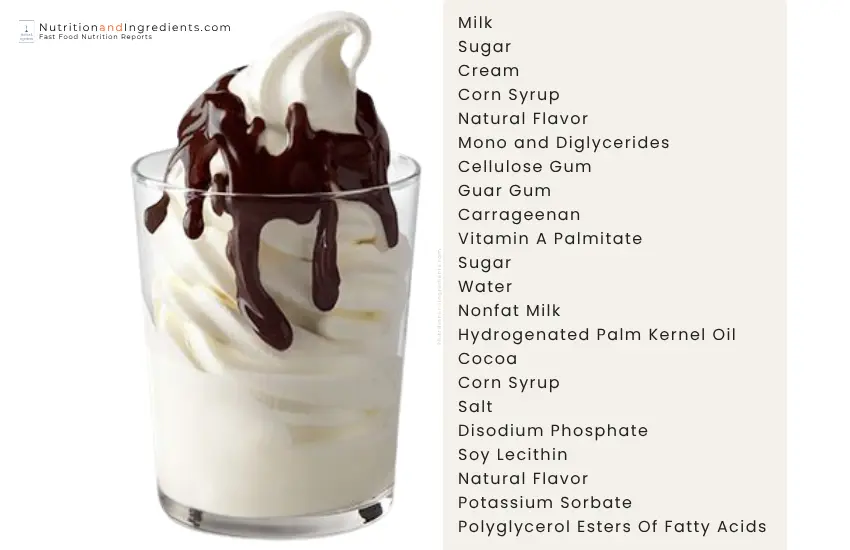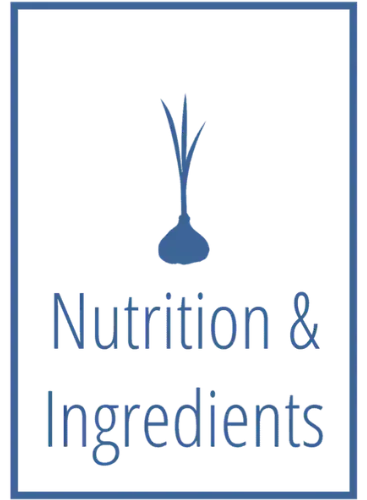McDonald’s Hot Fudge Sundae

The hot fudge sundae from McDonald’s is made with reduced fat vanilla ice cream and hot fudge topping.
One sundae has 330 calories, 10 grams fat, 51 grams carbohydrates, and 8 grams protein.
Read this detailed guide for a review of the nutritional information, calories, and ingredients in McDonald’s hot fudge sundae. Don’t miss the section below on Total Sugars.
Hot Fudge Sundae Nutritional Information
Nutritional information is presented based on a single serving measured as one hot fudge sundae.
Calories
There are 330 calories in one serving of McDonald’s Hot Fudge Sundae.
Here is a summary of calories by macronutrient, per serving:
The highest proportion of total calories (62%) is derived from carbohydrates, which includes sugars. Dietary fats make up another about 27% of the total calories, and the remaining 11% is from protein.
McDonald’s Hot Fudge Sundae
% calories from fat, carbs and proteinThe summary of calories by macronutrient is a rounded estimate based on the nutrition facts provided by McDonald’s fast food restaurant. Calories may vary as a result of how the treat is prepared.

FITNESS TIME TO BURN 330 CALORIES
Estimate based on moderate level of activity by an adult with average BMI.
Compare the nutrition facts and ingredients in chocolate milkshake from McDonald’s menu or a take-home scoop of Haagen-Dazs vanilla ice cream. Check the amount of saturated fat and added sugars to determine if the options are a good fit for your diet.

Nutrition Facts
Amount per 1 Hot Fudge Sundae
Red indicates %DV is high.
|
Calories |
330 |
|
%DV | ||
|
Total Fat |
10g |
12% |
|
Saturated Fat |
7g |
36% |
|
Trans Fat |
0g | |
|
Cholesterol |
25mg |
8% |
|
Sodium |
170mg |
7% |
|
Carbohydrates |
51g |
19% |
|
Dietary Fiber |
2g |
7% |
|
Total Sugars |
44g | |
|
Added Sugars |
36g |
71% |
|
Protein |
8g |
%DV based on a 2,000 calorie diet. Calorie needs vary and your %DV may be higher or lower. Provided for informational purposes only. Consult with your physician for dietary or healthcare advice.
Dietary Fat
One McDonald’s hot fudge sundae has 10 grams of total fat, including 7 grams of saturated fat. That is high.
According to the FDA, “saturated fat is a nutrient to get less of.”
Total Sugars
It’s important to note that one serving of the ice cream topped with hot fudge syrup contains 44 grams of total sugars, including 36 grams of added sugars. That is high.
SUMMARY OF TOTAL SUGARS PER SERVING

Ice Cream Sundae Ingredients and Allergens
There are two main ingredients in McDonald’s Hot Fudge Sundae dessert: reduced-fat vanilla ice cream and the hot fudge syrup topping.
Here is the complete list of ingredients in the ice cream and topping.
Ingredients
|
Vanilla Reduced Fat Ice Cream |
|
Milk, Sugar, Cream, Corn Syrup, Natural Flavor, Mono And Diglycerides, Cellulose Gum, Guar Gum, Carrageenan, Vitamin A Palmitate |
|
Hot Fudge Topping |
|
Sugar, Water, Nonfat Milk, Hydrogenated Palm Kernel Oil, Cocoa (processed with alkali), Corn Syrup, Salt, Disodium Phosphate, Soy Lecithin, Natural Flavor, Potassium Sorbate (preservative), and Polyglycerol Esters Of Fatty Acids. |
Allergens
Ingredients in the hot fudge sundae include both milk and soy.
Nutrition facts, prices, and ingredients are based on available information as of the date of publication. Restaurants and food manufacturers may change recipes or formulations without notice. Check package labels and ask the product manufacturer or restaurant for the most up-to-date information. Unless otherwise stated, %DV is based on a 2,000 calorie diet. All reports and reviews published on this site are for informational purposes only. NutritionandIngredients.com does not provide healthcare advice or dietary recommendations. Always consult your licensed physician for any healthcare or dietary advice.
Nutrition facts and ingredients source: McDonald’s. Food product images courtesy of McDonald’s. Original designs created by Nutrition & Ingredients for the purposes of research and commentary related to fast food reviews.
